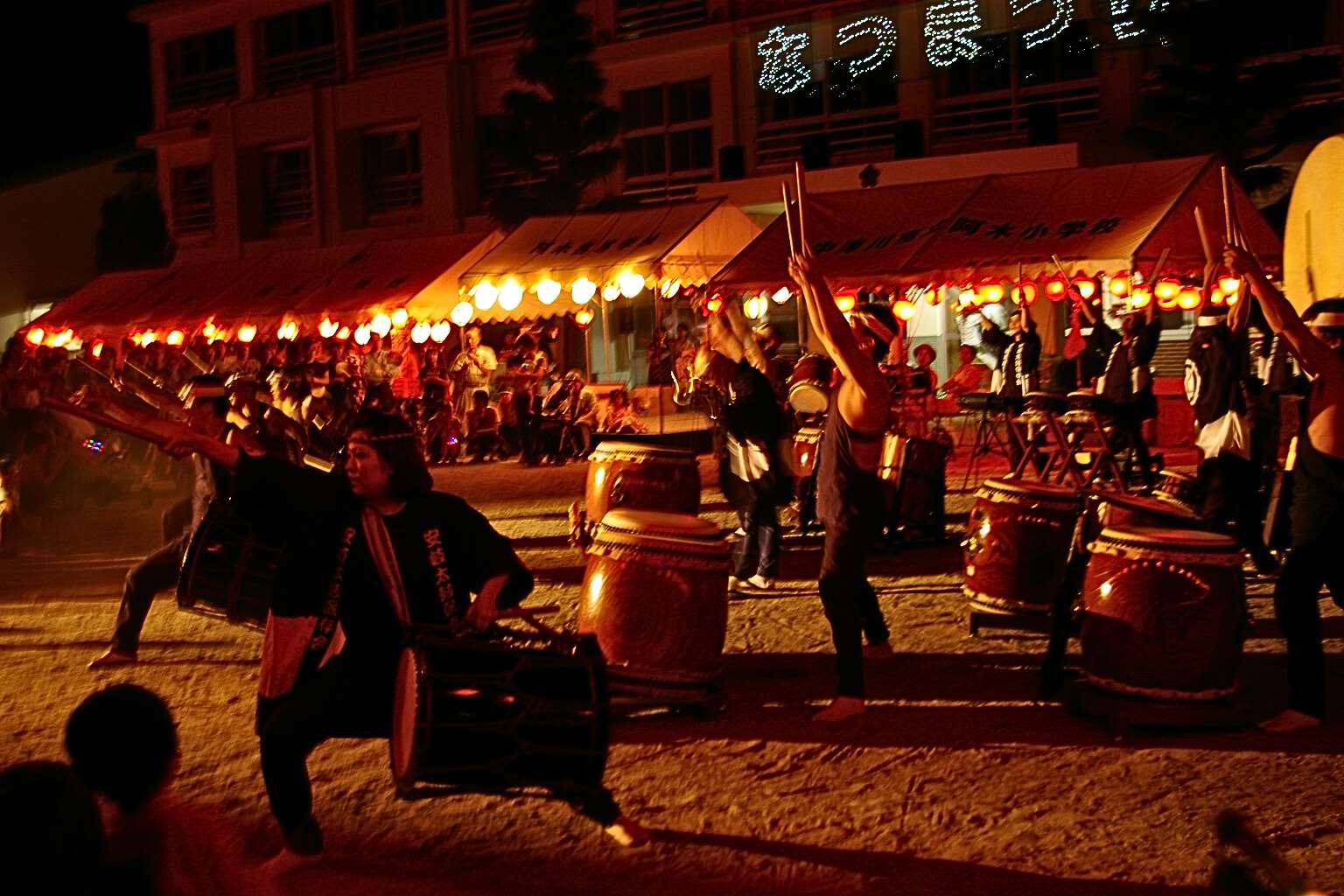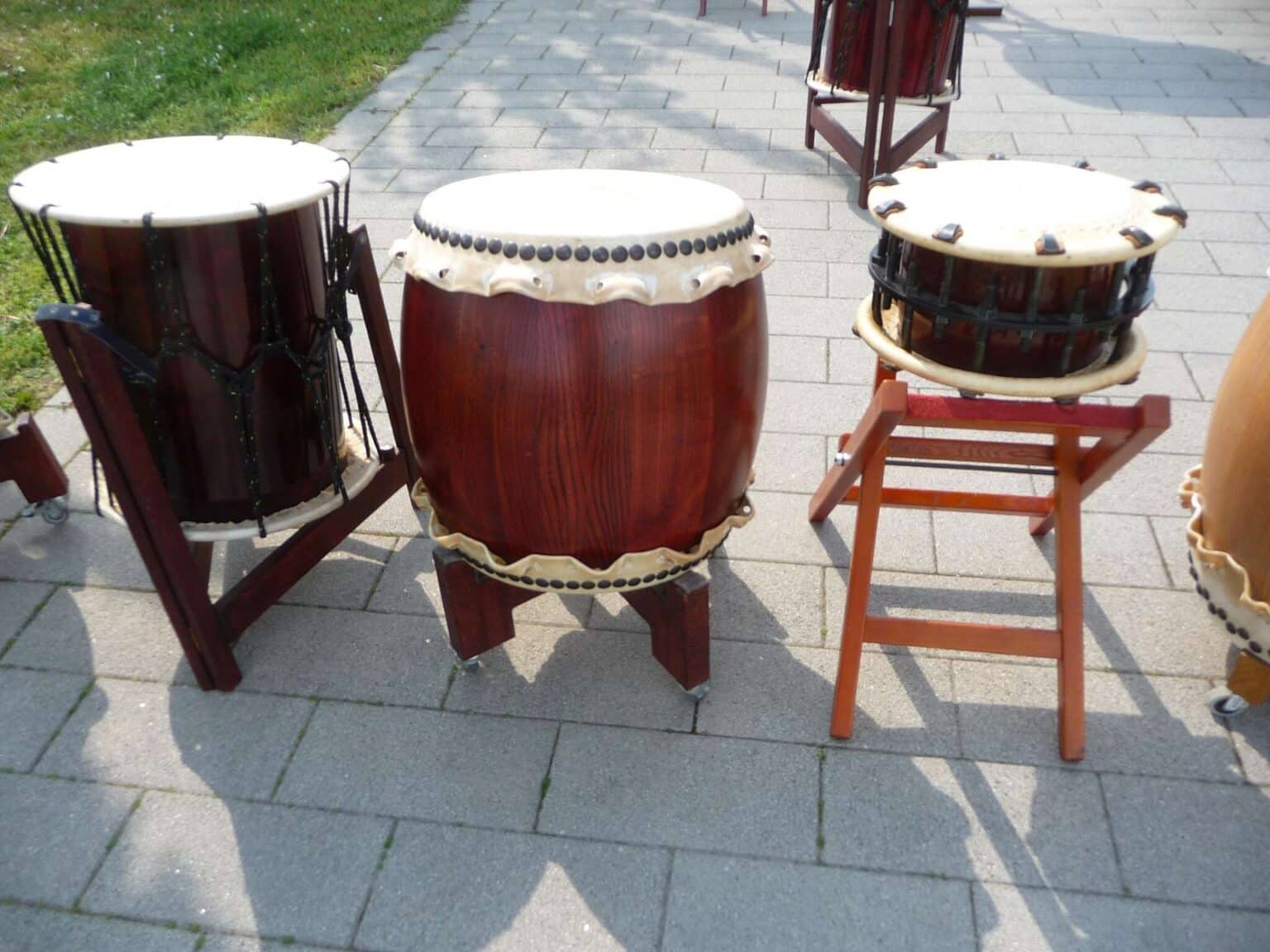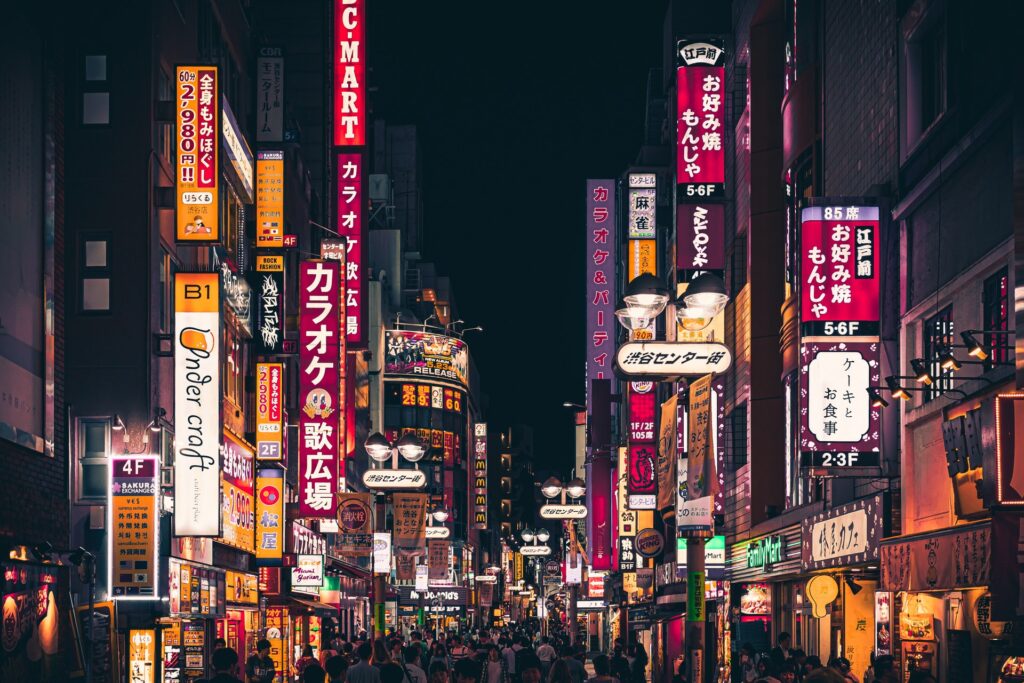Quick selection
Altogether different
The use of drums and similar percussive instruments are a core part of many musical compositions and performances, but rarely do they become a dominant component. How then would you feel about watching a production composed entirely of drums?
This is exactly what the Japanese taiko drums have evolved into.
In Japan (and now beyond) entire ensembles of taiko drummers take to the stage and deliver thunderous performances that can awaken even the most slumbering of spirits. Sure, its musicality may be up for debate, but its dedication to performance is unquestionable.
The idea of taiko performance may seem a little strange to many, but its popularity has grown both domestically and internationally, with taiko classes and clubs popping up across the world — including here in the UK.
Let’s learn some more.
Types of taiko drums
First off, the word taiko in Japanese simply means drum; rather than referring to a specific type as many may wrongly assume. However, in Japan, there are different types of taiko which are differentiated by how they are constructed, and fall into one of three categories:
- Byo-uchi-daiko
- Shime-daiko
- Tsuzumi
Byo-uchi-daiko
Byo-uchi-daiko, meaning tack-hitting-drum, is arguably the core part of the taiko drum set, and often comprise the majority of taiko performances. These barrel-shaped drums (like most taiko) have skins on either end and produce the deepest sounds compared to the other types.
They come in various sizes known as o-daiko, chu-daiko, and ko-daiko, which literally means big, medium, and small respectively, and the larger the drum the deeper the sound. There is also a hira-daiko meaning flat drum which produces a lighter sound, and a tsuri-daiko — but is used only in very specific circumstances.
Shime-daiko
The shime-daiko, meaning tie-drum, are smaller, flatter style taiko drums that produce a lighter sound. They get their name from the use of rope and cords which tension the skins on these particular drums. Much like the byo-uchi-daiko, shime-daiko come in various sizes named namitsuke, nicho, sancho, yoncho, and gocho-gakke meaning one to five; with one being the smallest and lightest sound and 5 being the larger and deepest — but not as deep as byo-uch-daiko.
There are also a set of slightly different shime-daiko that are handheld or worn with a strap.
Tsuzumi
Lastly there are Tsuzumi taiko drums which are altogether a bit different than the others. They are hourglass-shaped drums which use a rope and cord tensioning system much like shime-daiko, but are not fixed in the same manner. The tension ropes can be adjusted to change the pitch during a performance by pulling or releasing them as required.
Another unusual feature of these particular taiko is the necessity of moisture on the skin; without which, they will produce hardly any sound at all.
These particular taiko are not as commonly used as the other types on this list and only come in primarily two types; small or large.
Taiko performance
When you put a series of taiko together in the hands of seasoned taiko drummers, the results are quite spectacular. kumi-daiko is the term that describes this now prominent form of taiko performance which literally means group drumming; its transition from traditional uses within religious ceremony and military scenarios is firmly attributed to a former jazz drummer named Daihachi Oguchi.
Feel and flair
The appeal of taiko drums and their performances is multiple; in part, it is their very primal nature. The sounds of the drums and the reverberations you feel during a performance can be invigorating, but it is also the level of synchronisation and rhythms that are skillfully performed which are captivating and engaging to be a part of.
There is also the appeal of tradition and history that gives taiko a certain allure. Whilst the idea of group drumming in a performance sense is relatively modern, the taiko drum itself has been used since the 6th century in various forms; despite the 1400 year time difference, very little has actually changed in terms of drum construction and techniques etc.
Take a look at the following video to see taiko in action.
Style and variation
Performances can often be the highlight spectacle of festivals, celebrations, and other event gatherings, yet some dedicated taiko groups grow to be so popular as to put on their own dedicated shows. This brings me onto the fact that despite the seemingly limited scope that drum ensembles may suggest, many performances can be vastly different from one another.
Unlike other musical performances, taiko doesn’t use any form of notation to record or share its composition; doing so instead through oral methods such as instruction and observance. This practice allows for a great deal of freedom between groups where general motifs and rhythms can be passed on, while allowing the possibility of adding individual elements and characteristics.
Some taiko performances include more showmanship with the use of dance routines — whilst playing — or story and narrative elements, while others focus solely on traditional styles of taiko. Others have incorporated additional instruments to further diversify the performances, but are often used sparingly as to not to distract from the core taiko experience.
The importance of form
Whilst kumi-daiko is very much geared towards performance, taiko as a whole — including performance — has a high degree of commitment to form. Posture is a key component here with a wide stance and relaxed shoulders being a technically important part in playing well. This allows the drummer to remain stable during the performance.
Yet, form also applies in a holistic sense.
It is sometimes quoted to be similar to the principles found within various martial arts disciplines where there is a focus on an individual’s state of being or ‘energy’. It’s very much about having a relaxed mind and as well as body, and forming connections between yourself and drums. It’s an idea that comes from the traditional aspect of taiko and its uses in Buddhism and ceremony.

UK groups, workshops, and opportunities
The appearance and opportunity to watch taiko performances extends well beyond the borders of its native Japanese environment. Countries with large Japanese populations such as Brazil and the United States have perhaps the most active taiko groups, however, numerous others also contain active groups that regularly perform and tour.
Here in the UK for example, small-scale Japanese events often happen across the country that contain small taiko performances. Other larger annual events such as Japan Matsuri in London or the Scottish Taiko Festival also often contain bigger taiko performances as part of their itinerary.
The UK is also home to a good number of dedicated taiko groups that regularly perform their own shows, as well as offering workshops where you get the opportunity to learn and play taiko for yourselves. These include:
This is just a handful of the total that exist, with many more smaller or regional groups spread across the country. It’s really quite surprising at how many there are!
If that wasn’t enough, there are also Japanese taiko groups that regularly tour across the world such as Kodo — who I’ve personally come to admire.
In short, there’s no shortage of opportunity here.
Conclusion
The Taiko drum is one of Japan’s many traditional instruments but is one that has had the most impact. It’s a relatively simple idea but when perfectly executed turns into something quite unique. Not only is taiko about performance, it also has a community spirit to it which allows everyone to participate, and we’ve seen that doing so is very possible the world over, including here at home.
I asked a question at the beginning of this post “How would you feel about watching a production composed entirely of drums?” Hopefully after discovering the wonders of taiko the answer is ‘delighted’ — or something to that effect.
Nathan



